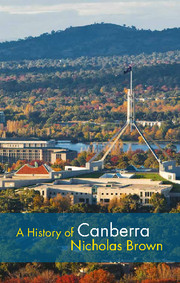2 - Not like any other
Published online by Cambridge University Press: 05 July 2014
Summary
THE MIRROR OF THE NATION’S TASTE
A national capital presupposes a nation, and can be expected to reflect something of whatever it is that draws people towards political unity. More particularly, the capitals of federations have a role in creating that spirit out of a range of pre-existing and contending loyalties. In the long debates, over more than two decades, leading towards Australian federation in 1901, such differences were clear, but a common spirit also developed. Recently, Australian historians have contended that these debates were a ‘high point in Australian history’, drawing together causes of political reform, of faith and destiny, to be championed by social movements and expressed in the popular election of delegates to drafting conventions that embodied the ‘sovereignty of the people’. But the issue of a capital was far from central to agenda that related primarily to the balance of interests between the colonies, and to what kind of constitution – what concepts of representation, inclusion or exclusion, what rights and powers – should characterise the nation to sit over them. Ideas for the capital itself would only gradually emerge in the fray. The realisation of that project would always be weighted by the past and shadowed by ambiguity and ambivalence.
Pragmatism eventually prevailed in those federation conventions, where any suggestion that either of the dominant colonial cities might be elevated to pre-eminence was at best a taunt to be ridiculed. ‘St Kilda!’, ‘Mount Gambier!’ or ‘some place in Tasmania!’ were among delegates’ responses to the goading proposition that Sydney, as the ‘mother’ city, was the obvious choice to become the national capital. Instead, it was agreed that the constitution would allow the new national parliament to choose its own home, albeit with clear constraints. A reluctant vote for federation was won from New South Wales with the condition that the nation’s ‘seat of government’ must be in that state, and no less than 100 miles (160 kilometres) from Sydney. For Melbourne, the compensation was that the Commonwealth parliament would sit there until that permanent home was secured. Both vying states had reasons to delay a solution given the concessions of land sought from New South Wales and the influence gained by Victoria.
- Type
- Chapter
- Information
- A History of Canberra , pp. 37 - 61Publisher: Cambridge University PressPrint publication year: 2014



